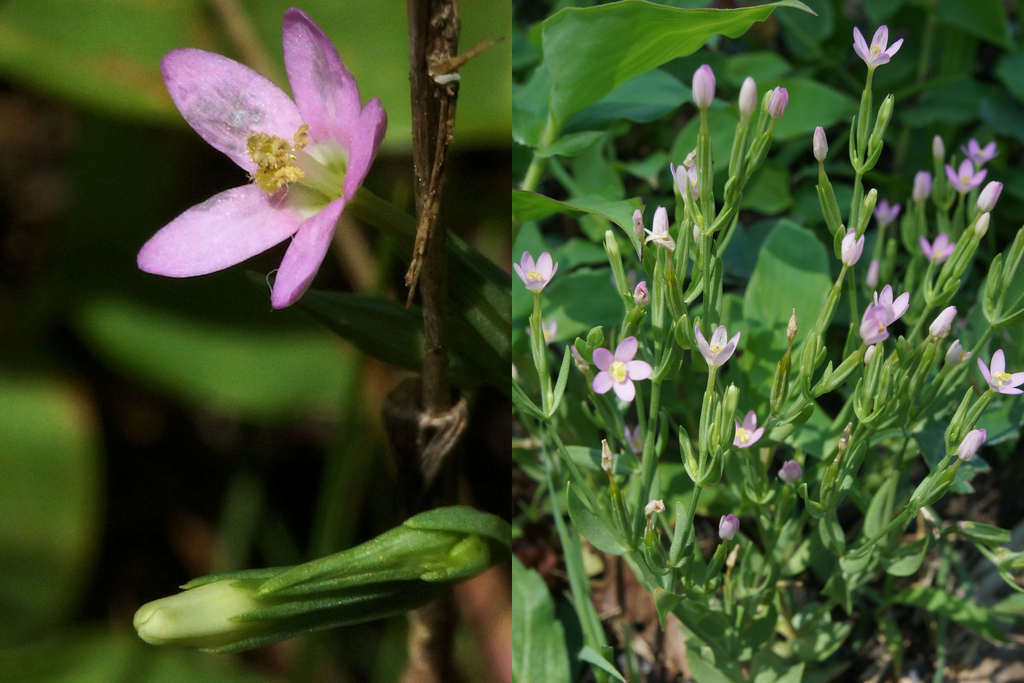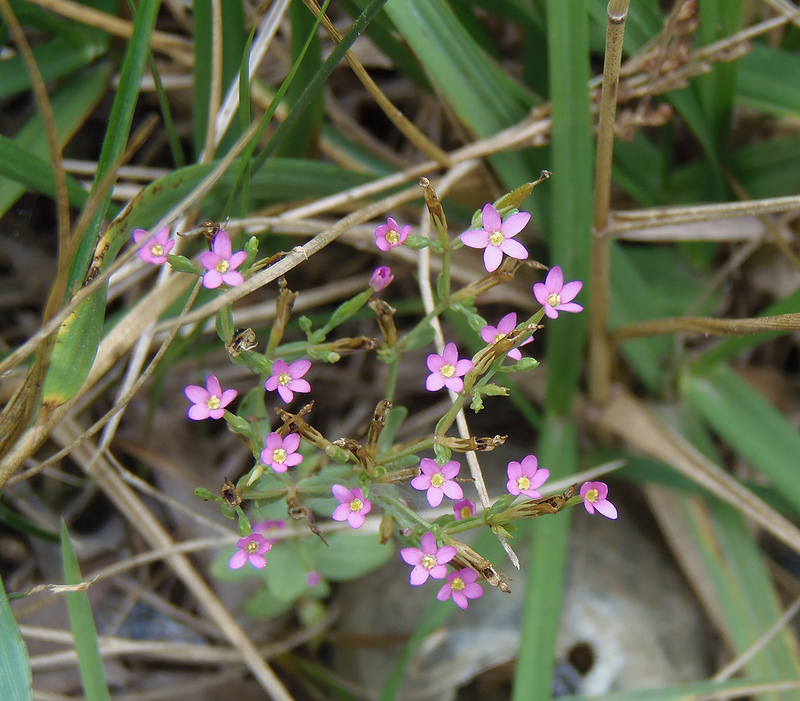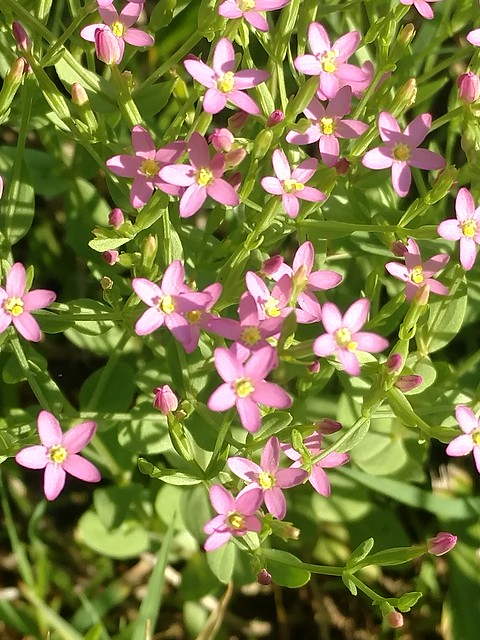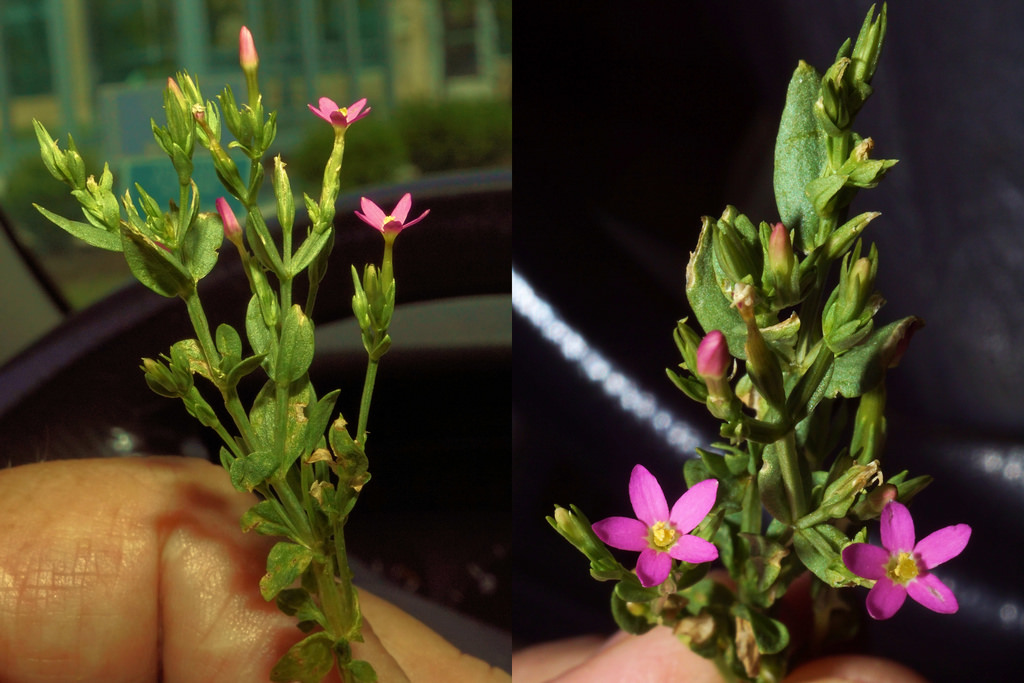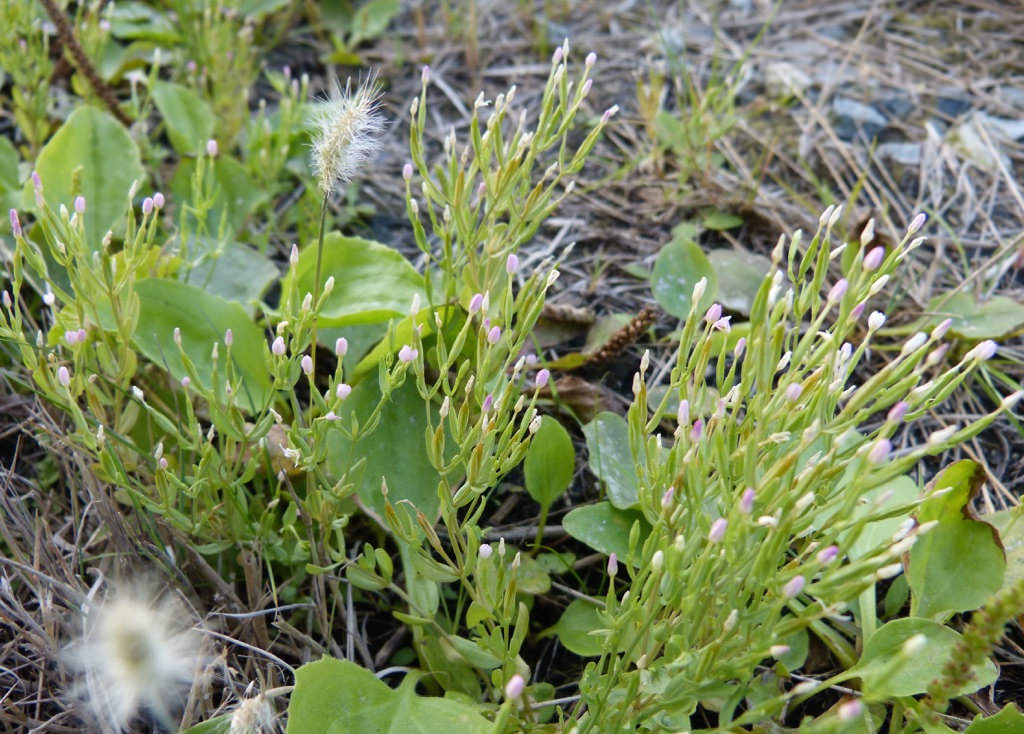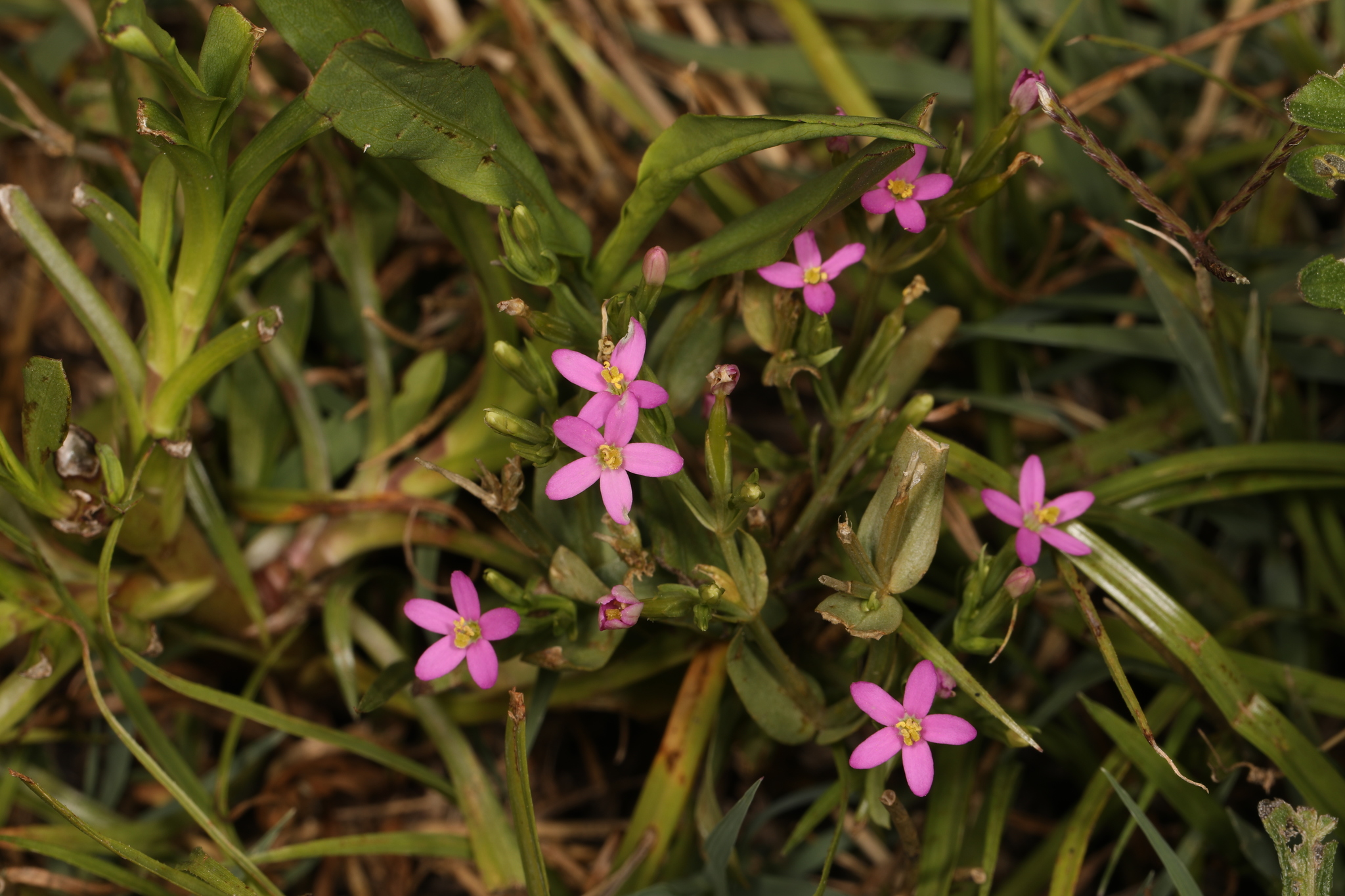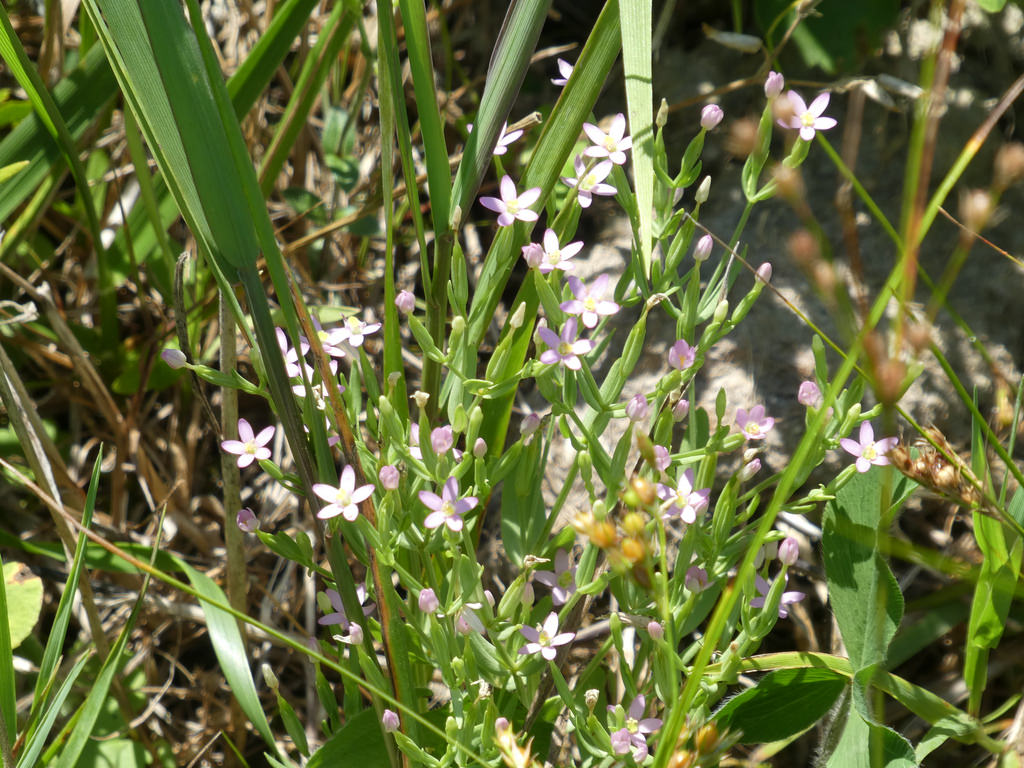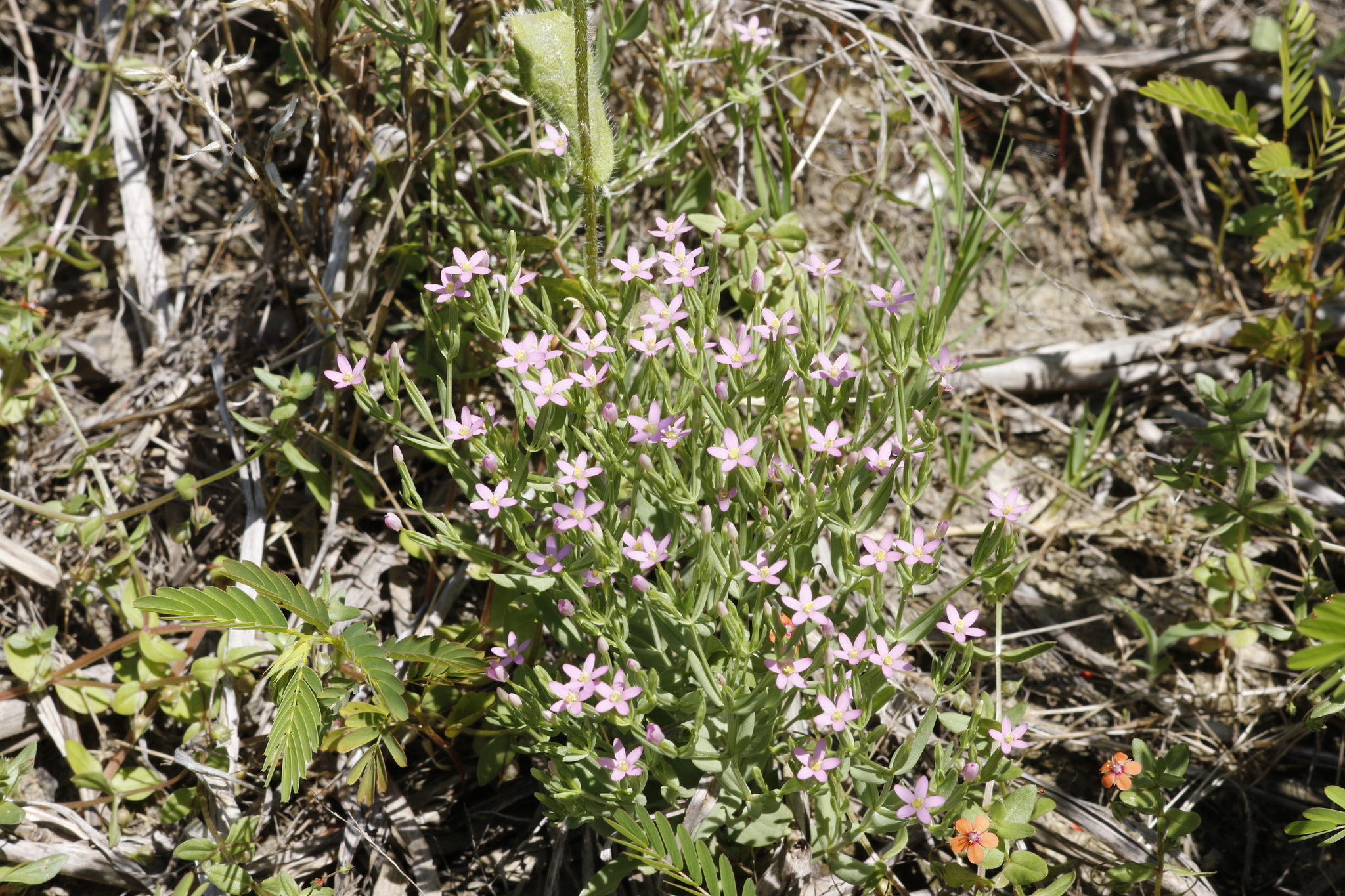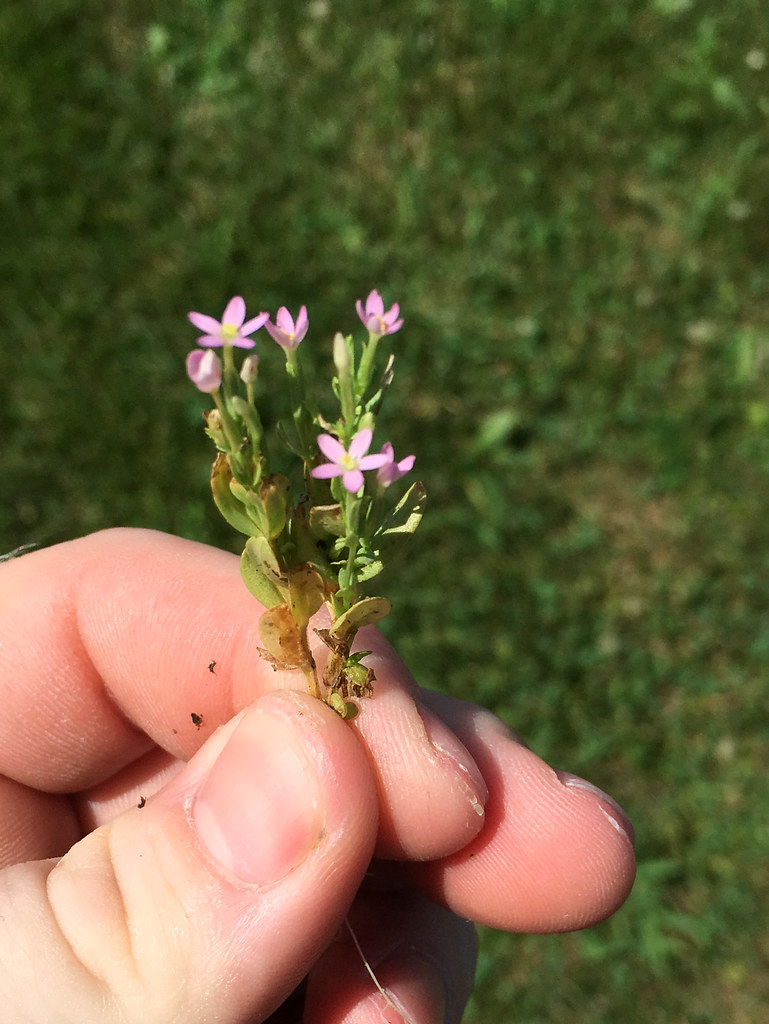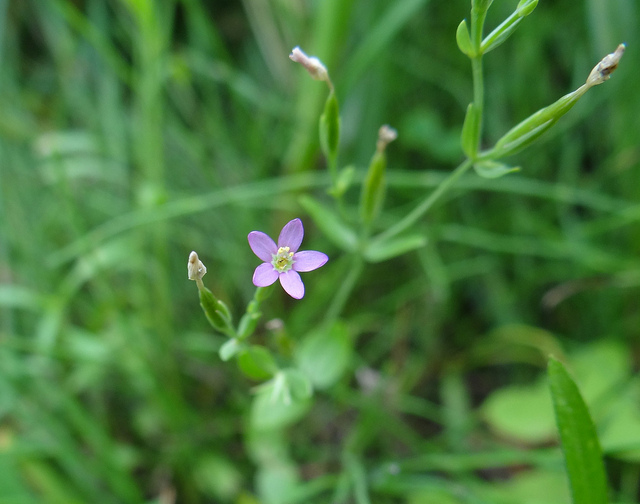Map Snapshot













55 Records
Seasonality Snapshot
Source: Wikipedia
| Centaurium pulchellum | |
|---|---|

| |
| Scientific classification | |
| Kingdom: | Plantae |
| Clade: | Tracheophytes |
| Clade: | Angiosperms |
| Clade: | Eudicots |
| Clade: | Asterids |
| Order: | Gentianales |
| Family: | Gentianaceae |
| Genus: | Centaurium |
| Species: | C. pulchellum
|
| Binomial name | |
| Centaurium pulchellum | |
| Varieties and subspecies[1] | |
| |
Centaurium pulchellum is a species of flowering plant in the gentian family known by the common name lesser centaury,[2] or slender centaury.[3] It differs from Centaurium erythraea by lacking basal rosette of leaves and by having a developed peduncle below the flowers. It is often much smaller, less than ten centimetres. It is native to the southern temperate parts of Europe.
Description
[edit]Lesser centaury is an erect annual herb branching from the base, often less than 10 cm (4 in) tall, and much smaller than common centaury (Centaurium erythraea). Sometimes it is reduced to a single stem with one flower. By the time it flowers, from June to September, there is no basal rosette. The leafy stem has opposite pairs of narrow oval leaves. The inflorescence is a group of a few pale pink star-like flowers, each with a short stalk, a tube and five narrow petals, about 1 cm (0.4 in) across, flat-faced with yellow anthers. Like other members of the family, the flowers close in the afternoon. The calyx is about as long as the fruit, which is a cylindrical capsule.[3][4]
Distribution and habitat
[edit]This plant is found in the southerly temperate zones of Europe. It occurs mainly in the southern half of the British Isles, especially near the south coast of England. It grows on a range of soil types, from calcareous to mildly acidic. On the coast it can be found in open sandy and muddy turf, often in saltmarshes, sand dunes and beside estuaries. Inland it inhabits lowland dry, open grasslands, heaths, woodland glades and rides, marl pits and other unshaded, disturbed ground.[5] In Morecambe Bay, it is at the northern end of its range on the saltmarshes, growing with Juncus gerardii, Juncus maritimus, Blysmus rufus and Eleocharis quinqueflora.[6]
References
[edit]- ^ "Centaurium pulchellum (Sw.) Hayek ex Hand.-Mazz., Stadlm., Janch. & Faltis". Plants of the World Online. Royal Botanic Gardens, Kew. Retrieved 5 September 2024.
- ^ BSBI List 2007 (xls). Botanical Society of Britain and Ireland. Archived from the original (xls) on 2015-06-26. Retrieved 2014-10-17.
- ^ a b McClintock, David; Fitter, R.S.R. (1961). The Pocket Guide to Wild Flowers. London: Collins. p. 129.
- ^ "Lesser centaury". The Wildlife Trusts. Retrieved 2020-03-17.
- ^ "Centaurium pulchellum". Online Atlas of the British and Irish Flora. JNCC. Retrieved 2020-03-18.
- ^ "Atlantic salt meadows". JNCC. Retrieved 2020-03-17.

